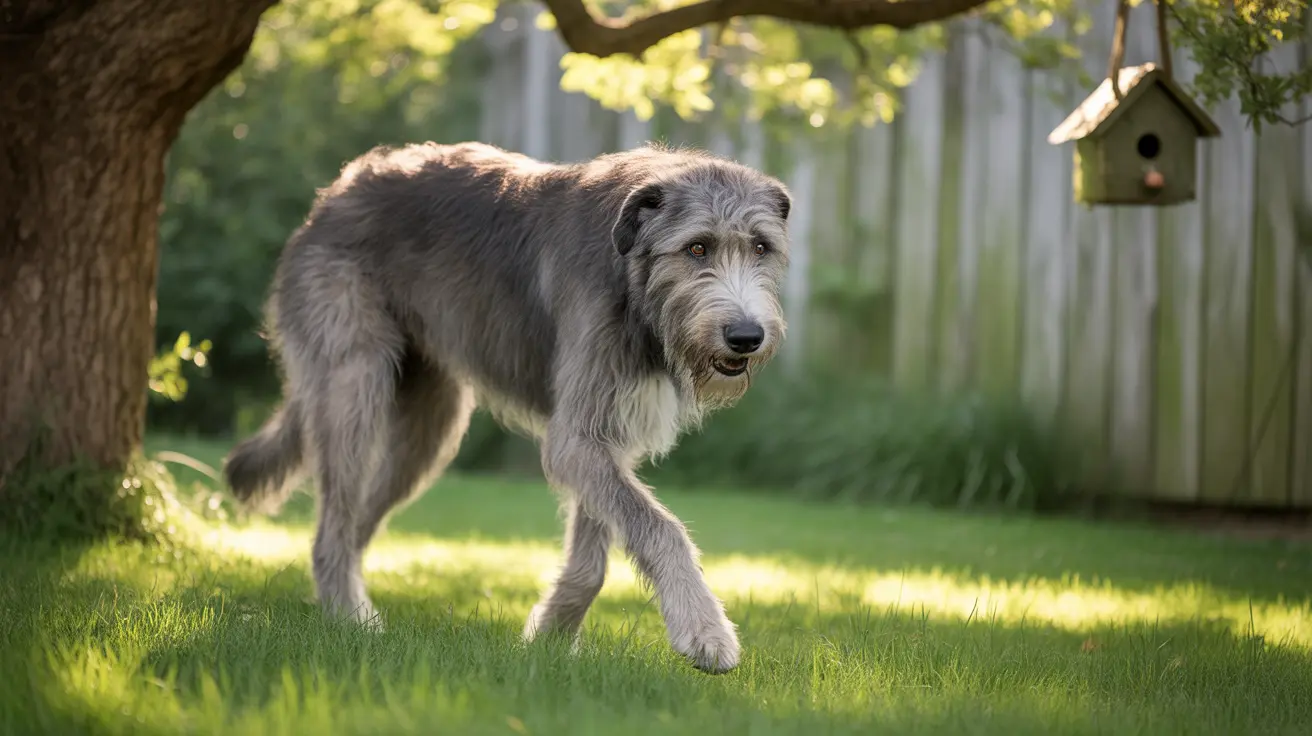The majestic Irish Wolfhound stands as one of the most impressive dog breeds in the world, known for its remarkable size and gentle disposition. For those captivated by these magnificent creatures, understanding similar breeds and their characteristics can help in making an informed decision about pet ownership.
Whether you're considering an Irish Wolfhound or exploring comparable breeds, this comprehensive guide will walk you through everything you need to know about these remarkable dogs and their counterparts.
Understanding the Irish Wolfhound Standard
Irish Wolfhounds are truly gentle giants, standing up to 7 feet tall when on their hind legs and weighing between 105 to 180 pounds. Their distinctive wiry coat and muscular build make them immediately recognizable, while their calm and patient demeanor often surprises those meeting them for the first time.
Despite their imposing size, these dogs are known for their sweet temperament and remarkable patience with children. They typically live 6-8 years, making their time with families shorter than many other breeds.
Similar Giant Breeds to Consider
Scottish Deerhound
Often considered the closest relative to the Irish Wolfhound, Scottish Deerhounds share many physical and temperamental traits. They're slightly smaller but maintain the same dignified bearing and gentle nature.
Great Dane
While different in appearance, Great Danes match Irish Wolfhounds in size and are often called "gentle giants" as well. They typically have shorter coats and more robust builds.
Characteristics of Giant Breed Dogs
Giant breeds like the Irish Wolfhound share several important characteristics that potential owners should consider:
- Slower maturation rate (2-3 years to reach full size)
- Higher food consumption and associated costs
- Need for spacious living arrangements
- Special medical considerations due to size
- Shorter lifespans compared to smaller breeds
Exercise and Training Requirements
Despite their size, Irish Wolfhounds and similar breeds require moderate exercise. Daily walks and access to a securely fenced yard are essential. These dogs benefit from:
- 30-60 minutes of daily exercise
- Mental stimulation through training
- Supervised play sessions
- Regular but measured activity to protect growing joints
Health Considerations for Giant Breeds
Large dogs like Irish Wolfhounds and similar breeds are prone to specific health issues that owners should monitor:
- Hip and elbow dysplasia
- Heart conditions
- Bloat (gastric dilatation-volvulus)
- Joint problems
- Growth-related issues
Frequently Asked Questions
How do I care for the coat of dogs like Irish Wolfhounds to minimize shedding?
Regular brushing 2-3 times per week with a slicker brush helps manage shedding. These dogs require professional grooming every 3-4 months and occasional hand-stripping to maintain coat health.
What are the most common health issues affecting Irish Wolfhounds and similar breeds?
The most common health concerns include heart disease, bone cancer, bloat, and joint problems. Regular veterinary check-ups and preventive care are essential for early detection and management.
How often should I exercise an Irish Wolfhound or similar large breeds?
These dogs need 30-60 minutes of moderate exercise daily, split into multiple sessions. Avoid strenuous exercise during growth phases and in extreme weather conditions.
Can Irish Terriers and other smaller Irish breeds be trained like larger hunting dogs?
Yes, Irish Terriers and similar breeds can be trained effectively using positive reinforcement methods. They're intelligent and responsive but may require more patience due to their independent nature.
What are some key differences in temperament between Irish Wolfhounds and Scottish Deerhounds?
While both breeds are gentle and noble, Irish Wolfhounds tend to be more laid-back and social, while Scottish Deerhounds can be slightly more reserved with strangers and maintain a stronger prey drive.
Conclusion
Understanding dogs like Irish Wolfhounds helps potential owners make informed decisions about bringing these magnificent animals into their homes. While they require specific care and consideration due to their size, these gentle giants and their similar breeds offer unparalleled companionship and loyalty to those prepared for the responsibility.






